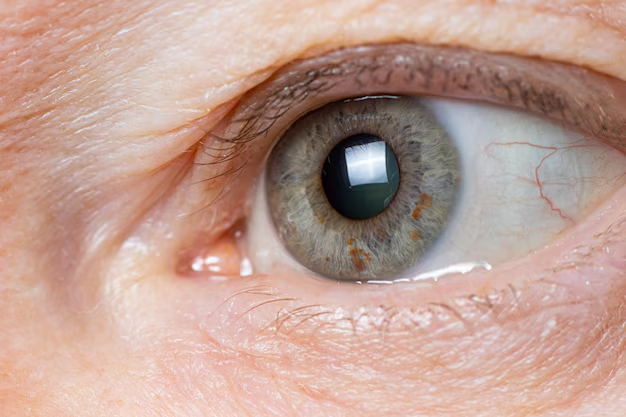Understanding Cataracts: A Guide to the Three Primary Types
When we think about vision changes that come with aging, cataracts often emerge as a key player. Cataracts are a common eye condition, characterized by a clouding of the lens that affects vision. They can impact your daily life, making activities like reading and driving more challenging. But not all cataracts are the same. In this guide, we’ll delve into the three primary types of cataracts, exploring each one to help you understand this condition better.
What Are Cataracts?
Before we explore the different types, it’s important to understand what a cataract is. A cataract forms when proteins in the lens of the eye clump together, causing cloudy or blurred vision. This is a gradual process that often goes unnoticed until it significantly affects vision.
Cataracts are primarily seen in older adults, but they can also be present at birth or develop due to other factors such as injuries or medical conditions. Common symptoms include blurry vision, difficulty with night vision, sensitivity to light, and seeing halos around lights.
The Three Types of Cataracts
1. Nuclear Sclerotic Cataracts
Nuclear sclerotic cataracts are the most commonly diagnosed type and often associated with aging. They develop in the nucleus, the central part of the lens, and gradually progress over time.
Characteristics
- Initial Symptoms: You might notice a temporary improvement in near vision, often referred to as "second sight," although this is typically short-lived.
- Progression: Over time, vision becomes more affected as the lens hardens and yellows, significantly impairing distance vision.
- Treatment: Typically requires surgical removal once vision impairment interferes with daily life.
Related Insights
This type of cataract can be more predictable in its progression. Many individuals with nuclear sclerotic cataracts notice their vision issues develop slowly, allowing some time for adjustment.
2. Cortical Cataracts
Cortical cataracts originate in the cortex, which is the outer layer of the lens. They often start as white, wedge-like opacities or streaks on the periphery of the lens and move inward, akin to spokes on a wheel.
Characteristics
- Initial Symptoms: Increased glare, especially at night, and light scatter that can make bright lights uncomfortable.
- Progression: The opacities typically grow inward, affecting central vision as they advance.
- Treatment: Like other cataracts, surgery can become necessary if it significantly impairs vision.
Related Insights
Cortical cataracts can cause the most trouble with night driving because of the way they scatter light. This unique characteristic often prompts quicker intervention.
3. Posterior Subcapsular Cataracts
Posterior subcapsular cataracts develop at the back of the lens’ capsule, in the path of light on its way to the retina. They can advance more quickly than other types and are often found in younger individuals as well.
Characteristics
- Initial Symptoms: Difficulty reading and performing tasks under bright light, as well as halos or glare around lights.
- Progression: These cataracts typically obstruct vision more rapidly than nuclear or cortical cataracts, affecting near vision especially.
- Treatment: Surgical intervention is usually recommended when vision impairment becomes evident.
Related Insights
This type of cataract is often linked with steroid use, diabetes, or severe nearsightedness (myopia). Due to its rapid progression, individuals may require sooner intervention.
Lifestyle Factors and Cataract Development
Cataracts can be influenced by various lifestyle and environmental factors. While age is the most significant risk factor, other contributors include:
- Sun Exposure: Prolonged exposure to UV rays can increase cataract risk. Wearing sunglasses that block UV rays can be protective.
- Smoking: Significant evidence suggests smoking can accelerate cataract formation.
- Diet: A diet lacking in antioxidants may increase risk, hinting that a balanced diet with fruits and vegetables could be beneficial.
Exploring Treatment Options
Once a cataract starts to interfere with everyday activities, it might be time to consider surgical removal. Surgery is the only effective treatment for cataracts, involving removing the cloudy lens and replacing it with a clear artificial one.
What to Expect from Cataract Surgery
Cataract surgery is one of the most common and successful procedures. It’s minimally invasive, often performed on an outpatient basis with local anesthesia.
- Pre-Surgery: Eye measurements determine the correct lens implant. Discussions about lens options (monofocal, multifocal, or accommodating) are essential.
- Post-Surgery: Most people notice significant vision improvement within a few days. Avoid strenuous activities and protect the eye as advised by your healthcare provider.
Preventive Measures and Eye Health Tips
While you can’t prevent cataracts entirely, certain measures can help delay their onset:
- Regular Eye Exams: Early detection can prevent significant vision loss.
- Healthy Habits: A nutritious diet, regular exercise, and avoiding smoking are beneficial for overall eye health.
- Protection: Use eyewear to shield your eyes from UV rays and injuries.
Quick Tips for Cataract Awareness 🌟
- 👀 Regular Check-ups: Regular eye exams are vital for early detection and management.
- 🕶️ Sun Protection: Invest in quality sunglasses that block 99-100% of UVA and UVB rays.
- 🍎 Balanced Diet: Nutrient-rich foods are good for eye health. Incorporate leafy greens and fish high in omega-3s.
Looking Forward: How Cataract Research Is Evolving
Research is continually advancing, looking into the genetic causes of cataracts and potential non-surgical treatment options. Innovative lens technologies and surgical techniques are also improving outcomes and recovery times.
Understanding cataracts involves recognizing their types and treatments, as well as the broader context of eye health. Whether you're facing cataracts or aiming to prevent them, being informed empowers you to manage your visual health confidently.
